Equatorial Guinea
Firms working everywhere from China to Saudi Arabia have to navigate the often grandiose ambitions of authoritarian regimes. With the Sipopo Congress Center, Murat Tabanlıoğlu says his Istanbul-based firm used the challenge to design “a showcase” for Equatorial Guinea as an opportunity to promote peace and development across Africa. A glass box wrapped in a geometric painted aluminum screen, the project was built in 2011 to house meetings of the Assembly of the African Union, an annual gathering of heads of state from the organization's 54 member countries. Equatorial Guinea's long-ruling leader, Teodoro Obiang Nguema Mbasogo, had been struck two years earlier by the luminous hall that Tabanlıoğlu Architects designed for Tripoli, Libya, when it hosted the Assembly, and he asked the firm to create a similarly impressive structure for the Union's meetings in his country. (The Tripoli building survived the revolution that toppled Muammar Gaddafi, though work stopped on a nearby conference center there by Zaha Hadid.)
Tabanlıoğlu agreed his firm would take the commission, focusing, he says, less on working for another autocratic government than on promoting the African Union. “We were aiming to create a scene for negotiations and peace among many countries,” he says. “Nature and harmony were the elemental inspirations for the building.”
A two-story steel structure, the 148,000-square-foot congress center positions three gathering spaces and a restaurant around a central meeting hall. Raised on a plinth, it is connected by a narrow, glass-enclosed bridge to a separate, existing convention center (built by the China State Construction Engineering Corporation a few years earlier). The congress center's most distinguishing feature is the shimmering metal screen that veils its glazed facade in a curtain of geometric filigree. To be ready in time for the African Union meetings in June 2011, the entire building was designed and built in six months by Tabanlıoğlu and the large Turkish construction firm Summa. Obiang was pleased with the result. “The building was like an Olympic stadium,” says Tabanlıoğlu. “It was important for him to show it off to the other African leaders.” The building is currently used for a rotating program of conferences.
Located in the coastal curve of West Africa, Equatorial Guinea consists of three primary islands and a mainland swatch wedged between Cameroon and Gabon. The capital, Malabo, sits on the northern tip of Bioko, the largest of the islands. Obiang took power in a 1979 coup and has presided over an economic boom since the discovery of large oil reserves—estimated at 1.1 billion barrels—in the mid-1990s. The Sipopo center is part of an oceanside development on the capital city's northeastern edge that also includes a cluster of hotels and recently built infrastructure, all primarily financed by oil revenue. (Travel to Equatorial Guinea by foreigners can be difficult, and Record was unable to send a reporter to view the project in person.)
The building's glazed envelope provides views to the ocean on one side and a forest on the other. Tabanlıoğlu made preliminary sketches for the metal screen's angular bands based on the canopies of surrounding ceiba trees. “When you go there, you see buildings made by local people without architects, you see colonial buildings that came from the French and the Spanish, and you see new hotels and office buildings that look like they came from Europe and landed on the island,” he says. “It was important for us to distinguish our building by making it part of the surrounding nature.”
Working with an Istanbul fabricator, the firm made several mock-ups of the screen before settling on a series of triangular units that could be shipped to the project site and bolted to the facade. The screen's hatching is densest on the upper portions and at the angles where the equatorial sun shines most directly into the glass. The pattern becomes more open as it moves down the facade to allow unobstructed views to the landscape.
Inside, the glass-enclosed bridge from the existing convention center brings visitors into a double-height space, where a reception desk stands below an illuminated map of Africa—backlit by LEDs, its glass domes perforate a metal silhouette of the continent with a red lens indicating Malabo's location. The map hangs against a textured chevron pattern of metal and teaklike afrormosia panels that runs the length of the wall. Similar finishes designed by the firm continue in the other double-height spaces that ring the central meeting room, including a restaurant with ocean views on the north side and lounges for visiting dignitaries on the south.
At the core of the building, a box inside a box encloses the 420-seat meeting room. Rings of desks emanate from the open center of the space. Suspended from the ceiling, an array of video monitors can be raised and lowered around a tiered chandelier. Tabanlıoğlu designed it and other lighting fixtures with rainlike droplets of crystal. “Normally these conference centers are very chic places,” says Tabanlıoğlu. “We tried to find a way to incorporate natural forms with that expectation.” He and his team buried audiovisual equipment and the restaurant's back of house, as well as cooling and other mechanicals, in the building's basement and plinth.
The contractor, Summa, had to import all of the building materials—except concrete—from abroad, which forced Tabanlıoğlu to keep the constraints of shipping containers and cargo planes in mind and to do it all on the tight, six-month timeline. But the resources of Equatorial Guinea's leader kept pushing the project forward. “There were no constraints on the budget,” he says. “We don't normally work that way.”
People
Client:
Architect:
Personnel in architect's firm who should receive special credit:
Interior Design:
General Contractor:
Landscape Consultant:
General Coordinator:
Project Manager:
Engineers:
Mechanical Engineer:
Electrical Engineer:
Consultants:
Acoustic Consultant: Architectural Lighting Consulting: ZKLD Studio Sound & Media Screen Systems
Consultancy: Photography: Emre Dörter Cost: withheld Size: 148,000 square feet (gross) Completion date: June 2011 |
Products
Exterior cladding:
Metal Mesh Cladding:
Steel Works:
Furnishings: |
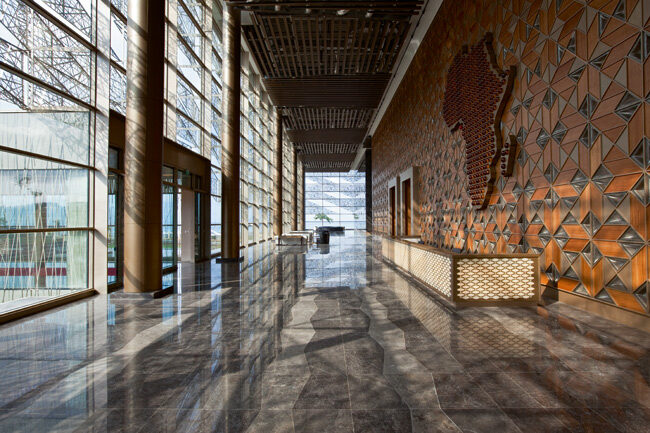
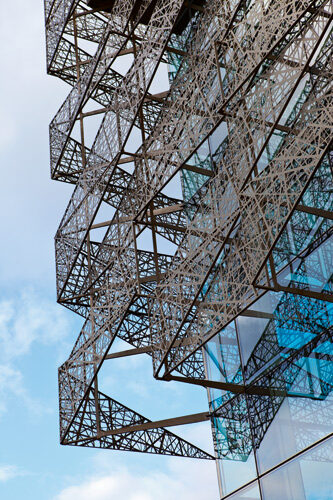
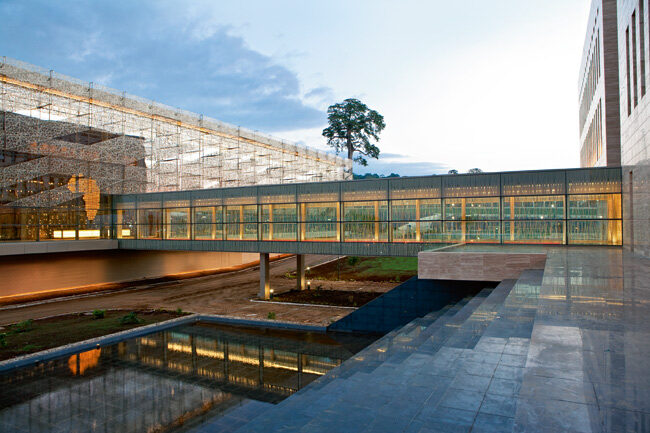
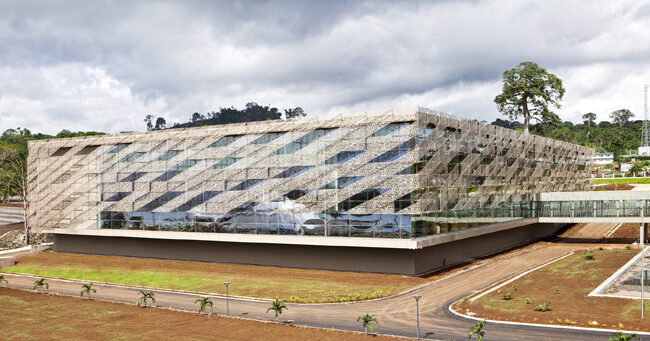
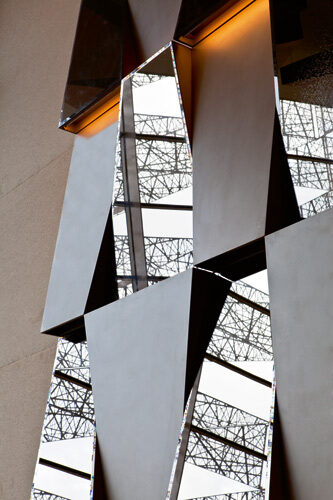
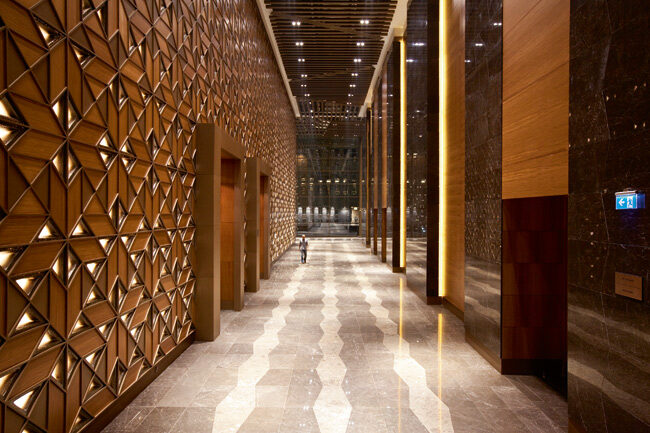
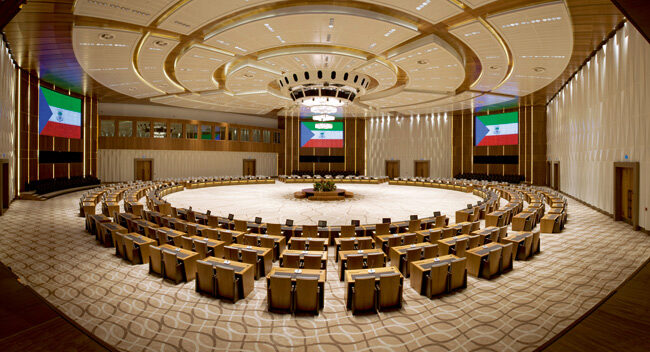
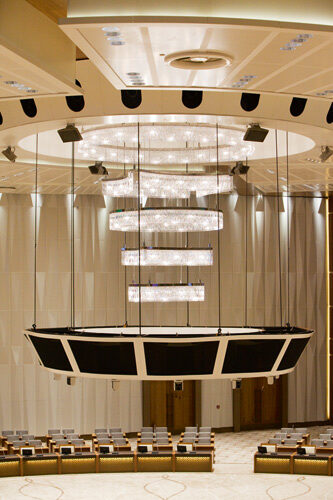

Post a comment to this article
Report Abusive Comment